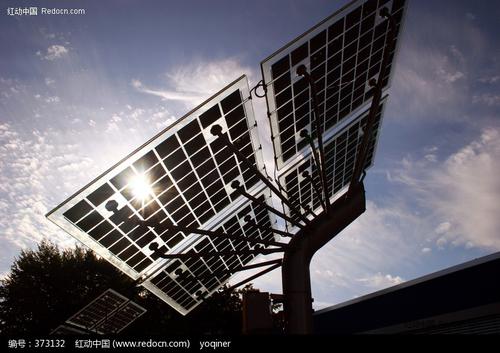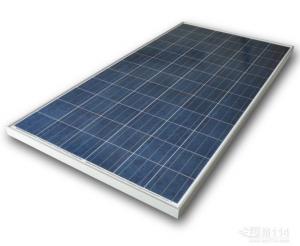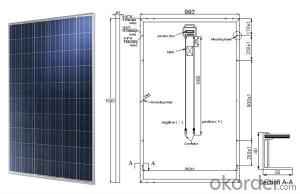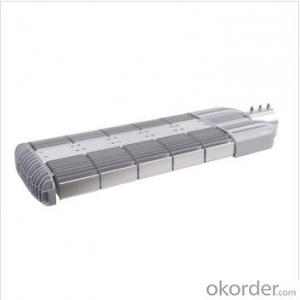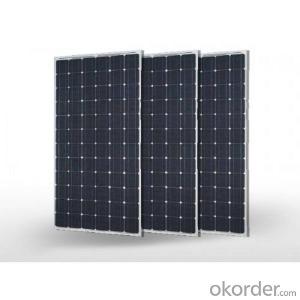Edge Solar Panels
- Loading Port:
- China Main Port
- Payment Terms:
- TT OR LC
- Min Order Qty:
- -
- Supply Capability:
- -
OKorder Service Pledge
OKorder Financial Service
You Might Also Like
Solar Module
ABOUT YINGLI GREEN ENERGY
Yingli Green Energy Holding Company Limited (NYSE: YGE) is one of
the world’s largest fully vertically integrated PV manufacturers, which
markets its products under the brand “Yingli Solar“. With over 7.0GW
of modules installed globally, we are a leading solar energy company
built upon proven product reliability and sustainable performance. We
are the fi rst renewable energy company and the fi rst Chinese company
to sponsor the FIFA World CupTM.
PERFORMANCE
- High effi ciency, multicrystalline silicon solar cells with high transmission
and textured glass deliver a module effi ciency of up to 16.0%,
minimizing installation costs and maximizing the kWh output of your
system per unit area.
- Tight positive power tolerance of 0W to +5W ensures you receive
modules at or above nameplate power and contributes to minimizing
module mismatch losses leading to improved system yield.
- Top ranking in the “TÜV Rheinland Energy Yield Test” and the
“PHOTON Test” demonstrates high performance and annual energy
production.
RELIABILITY
- Tests by independent laboratories prove that Yingli Solar modules:
Fully conform to certifi cation and regulatory standards.
Withstand wind loads of up to 2.4kPa and snow loads of up to
5.4kPa, confi rming mechanical stability.
Successfully endure ammonia and salt-mist exposure at the highest
severity level, ensuring their performance in adverse conditions.
- Manufacturing facility certifi ed by TÜV Rheinland to ISO 9001:2008,
ISO 14001:2004 and BS OHSAS 18001:2007.
WARRANTIES
- 10-year limited product warranty1.
- Limited power warranty1: 10 years at 91.2% of the minimal rated power
output, 25 years at 80.7% of the minimal rated power output.
1In compliance with our Warranty Terms and Conditions.
QUALIFICATIONS & CERTIFICATES
IEC 61215, IEC 61730, MCS, CE, ISO 9001:2008, ISO 14001:2004, BS OHSAS
18001:2007, PV Cycle, SA 8000
ELECTRICAL PERFORMANCE
Electrical parameters at Standard Test Conditions (STC)
Module type YLxxxP-29b (xxx=Pmax)
Power output Pmax W 260 255 250 245 240
Power output tolerances ΔPmax W 0 / + 5
Module effi ciency ηm % 16.0 15.7 15.4 15.1 14.8
Voltage at Pmax Vmpp V 30.3 30.0 29.8 29.6 29.3
Current at Pmax Impp A 8.59 8.49 8.39 8.28 8.18
Open-circuit voltage Voc V 37.7 37.7 37.6 37.5 37.5
Short-circuit current Isc A 9.09 9.01 8.92 8.83 8.75
Electrical parameters at Nominal Operating Cell Temperature (NOCT)
Power output Pmax W 189.7 186.0 182.4 178.7 175.1
Voltage at Pmax Vmpp V 27.6 27.4 27.2 27.0 26.8
Current at Pmax Impp A 6.87 6.79 6.71 6.62 6.54
Open-circuit voltage Voc V 34.8 34.8 34.7 34.6 34.6
Short-circuit current Isc A 7.35 7.28 7.21 7.14 7.07
STC: 1000W/m2 irradiance, 25°C cell temperature, AM1.5g spectrum according to EN 60904-3.
Average relative effi ciency reduction of 3.3% at 200W/m2 according to EN 60904-1.
NOCT: open-circuit module operation temperature at 800W/m2 irradiance, 20°C ambient temperature, 1m/s wind speed.
OPERATING CONDITIONS
Max. system voltage 1000VDC
Max. series fuse rating 15A
Limiting reverse current 15A
Operating temperature range -40°C to 85°C
Max. static load, front (e.g., snow) 5400Pa
Max. static load, back (e.g., wind) 2400Pa
Max. hailstone impact (diameter / velocity) 25mm / 23m/s
CONSTRUCTION MATERIALS
Front cover (material / thickness) low-iron tempered glass / 3.2mm
Cell (quantity / material / dimensions /
number of busbars)
60 / multicrystalline silicon / 156mm x 156mm / 2 or 3
Encapsulant (material) ethylene vinyl acetate (EVA)
Frame (material / color / anodization color /
edge sealing) anodized aluminum alloy / silver / clear / silicone or tape
Junction box (protection degree) ≥ IP65
Cable (length / cross-sectional area) 1000mm / 4mm2
Plug connector
(type / protection degree) MC4 / IP67 or YT08-1 / IP67 or Amphenol H4 / IP68
PACKAGING SPECIFICATIONS
Number of modules per pallet 29
Number of pallets per 40' container 28
Packaging box dimensions
(L / W / H) 1700mm / 1135mm / 1165mm
Box weight 568kg
Unit: mm
• Due to continuous innovation, research and product improvement, the specifi cations in this product information sheet are subject to change
without prior notice. The specifi cations may deviate slightly and are not guaranteed.
• The data do not refer to a single module and they are not part of the offer, they only serve for comparison to different module types
- Q: I heard that solar energy has a lot of advantages but are there any drawbacks in using the solar panels?
- There okorder /... ). These systems provide relatively high efficiency, since they don't convert sunlight to electricity, and they can be used to supplement or replace energy used for space and hot water heating - some of the largest residential uses of energy. Like any other appliance or household system, solar panels used to collect heat will require periodic maintenance. Hope this helps.
- Q: For a computer technology project we are using solar panels and trying to see different methods that will increase the output of solar power from these panels. For now, we have got polymer stickers and mirrors. Are there any more methods, or information that increase the solar power? Please and thank you :)
- I agree with the other answers; . Different angles to attract more light. 2. Cooling the panels. Just make sure you have a control set up. As for the cooling I'd say if the aim was overall energy efficiency then this method would not work unless you could devise a cooling method that didn't use any electricity.
- Q: we are trying to reduce a solar panel from 9 volts to 3 volts. What do we need to make this work...
- Solar panels generate DC power. Changing DC voltage is hard, which is why the power grid is AC voltage. AC voltage can easily be changed with a transformer. To keep the DC power (watts) the same at a lower voltage you need a DC to DC converter. That basically changes the power to AC with an inverter, changes the AC voltage to the new value, then rectifies it back to DC. It is probably hard to find a commercial unit that handles those voltages and then it will be expensive. But I have a simple solution in the special case of a solar panel. Solar panels are made up of smaller solar cells. The basic solar cell has a very low voltage, like half a volt. The panel has many of them connected in series to make a higher voltage. Just cover (shade) some of them and the voltage generated by the panel will be less. Of course that reduces the power. And you may need to experiment with shading different parts of the panel and measuring the result with volt meter.
- Q: I know absolutely nothing about electronics but have a lot of money. I am thinking of buying the Sunforce 3730 30W monocrystalline solar panel (the best I could find that was that size or smaller). What would be a good battery to go with it? I am thinking of buying a 2V Concorde Sun Xtender (again, the best I could find). But how many batteries will I need? I want enough batteries that it would take the solar panel 2 days to completely charge them from empty (bearing in mind the unavoidable inefficiencies like cloudiness/changing sun angles). Also, what other stuff would I need, like I hear something about a quot;charge controllerquot;? Any suggestions would be appreciated.
- How many batteries you will need depends on what you are planning to do with them which you did not mention? Sunforce makes a 30 amp charge controller part no. 60033
- Q: Can solar panels be used in areas with high levels of volcanic activity?
- Yes, solar panels can be used in areas with high levels of volcanic activity. While volcanic activity may pose certain challenges, such as increased dust or ash that could potentially reduce the efficiency of solar panels, proper maintenance and cleaning can help overcome these obstacles. Additionally, solar panels are resilient and can withstand extreme weather conditions, including volcanic ashfall. Therefore, with the right precautions and regular maintenance, solar panels can still be a viable and sustainable energy option in areas with high levels of volcanic activity.
- Q: Can solar panels be installed on factories or manufacturing facilities?
- Yes, solar panels can definitely be installed on factories or manufacturing facilities. In fact, these large industrial buildings often have expansive roof spaces that are ideal for installing solar panels. By harnessing solar energy, factories and manufacturing facilities can significantly reduce their reliance on traditional energy sources, lower their carbon footprint, and potentially save on electricity costs in the long run.
- Q: Do solar panels require regular cleaning?
- Yes, solar panels do require regular cleaning to maintain optimal performance. Accumulation of dust, dirt, leaves, bird droppings, and other debris can reduce the efficiency of the panels. Regular cleaning, either by homeowners or professional services, helps ensure maximum sunlight absorption and energy production.
- Q: Can solar panels be installed on historical buildings?
- Yes, solar panels can be installed on historical buildings. However, it requires careful planning and consideration to ensure that the installation does not compromise the building's historical integrity. Various techniques can be employed, such as integrating solar panels into existing structures, using non-penetrating mounting systems, or placing panels in less visible areas. Preservation guidelines and local regulations should be followed to maintain the historical significance while promoting sustainable energy.
- Q: I need to know how Solar panels work please help me!! Also, if you know any other additional important information about Solar Energy in General please tell me, Thanks.
- The most important parts of a solar cell are the semiconductor layers, this is where the electron current is created. There are a number of different materials available for making these semiconducting layers, and each has benefits and drawbacks. Unfortunately, there is no one ideal material for all types of cells and applications. In addition to the semiconducting materials, solar cells consist of a top metallic grid or other electrical contact to collect electrons from the semiconductor and transfer them to the external load, and a back contact layer to complete the electrical circuit. Then, on top of the complete cell is typically a glass cover or other type of transparent encapsulant to seal the cell and keep weather out, and a antireflective coating to keep the cell from reflecting the light back away from the cell. A typical solar cell consists of a cover glass, a anti-reflective layer, a front contact to allow the electrons to enter a circuit and a back contact to allow them to complete the circuit, and the semiconductor layers where the electrons begin to complete there voyages! The solar panels, in order to generate power, are using the method of screen-printing, a technique developed for printing fabrics, paper and to produce plastic, glass and metal solar cells. The basic materials of a photovoltaic cell (solar cell) are inexpensive. The homemade solar cells have about /4 of the efficiency of commercial silicon solar cells, which turn 0-20 per cent of light energy into electricity. But, being cheap to produce, they can make up the loss in quantity what they lack in quality.
- Q: Can anyone give me some info on how to figure how many panels needed for a 0 volt 2 amp pool motor. Thanks/ Run 5 hours a day
- I don't think heating a 70,000 gallon pool with solar panels is practical. My husband has designed and built our solar hot water system. It works quite well. We live in Arizona. There's no way we could heat that much water using sun energy. You have to heat the water and compete with the outside air.
Send your message to us
Edge Solar Panels
- Loading Port:
- China Main Port
- Payment Terms:
- TT OR LC
- Min Order Qty:
- -
- Supply Capability:
- -
OKorder Service Pledge
OKorder Financial Service
Similar products
Hot products
Hot Searches
Related keywords

